An exhaust that crackles and pops is one of the best parts about driving a Mustang. Having an exhaust that leaves a thick, throaty burble in its wake is a touchstone of American muscle cars and hot rods making big power.
What’s the easiest way to get your exhaust to pop and crackle? While the engine is running, push the throttle to the floor and immediately lift off. The engine will command more fuel, but it will not completely combust in the cylinder, leaving some to burn in your exhaust manifold. This is technically known as overrun.
There’s a lot of factors to exhaust noises and a lot more you can do to get the sound you’re looking for.
Getting Even More Exhaust Crackle
If you’re looking for a symphony to play on deceleration, there are a few things you can do to enhance the sound. First, you can run a richer tune. Ask your tuner to richen up the fuel maps a bit, throttle conditions, and reduce timing in lower RPMs.
This is essentially the same thing that caused classic muscle cars the sound the same way. Their carburetors just weren’t as good at regulating fuel than modern injected systems. A little too much fuel when it’s not needed
Some tuners out there will even give you a “popcorn tune” that will provide the same sort of effect. Tuners can do some really interesting stuff with the ECU tables.
Believe it or not, some fancy manufacturers will also edit the tune to pull timing and intentionally cause miniature misfires to artificially create the sound. Opinions are varied on this practice, but as a car guy, it’s hard to argue with a cool sounding car.
I guess you could say im very happy with my new exhaust. Mmmmm kooks 🧡
Posted by Breanna Lynn Black on Tuesday, December 11, 2018
Mustang Exhaust Deceleration Burbling and Bubbling
If you’re looking for a more subdued sound, more of the standard burbling and rumbling that most people appreciate about muscle car exhaust, that mostly has to do with your exhaust system itself.
As hotter and colder exhaust gases exit the engine and into your exhaust system, the changing densities of the hot and cold gas interacting with each other change how the sound exits tailpipe.
As the engine is operating normally, it should make a consistent sound out of the tailpipe, but because of the changing densities of exhaust gases, the sound has to move through these different layers to exit. It is a bit like an airplane traveling through turbulent air or boat moving through rippling water.
Most performance and aftermarket exhaust systems are significantly larger than stock and therefore provide more volume for exhaust gases to fill. If the exhaust gas isn’t being pushed out uniformly, it will create inconsistent back pressure in the exhaust system which causes that bubbling sound that we all enjoy.
Straight Pipes and Resonator Removal
Often, the easiest modification that anyone can do to get more sound out of their exhaust system is to simply open it up. Providing less restriction will also allow more sound to come out.
Straight pipes are the easiest way to do this, but the volume and drone alone will be enough to make you rethink this. Not to mention, this will also likely put you into ticket territory if you live in any major city.
If you’re not ready to go all out and gut your entire system, simply removing your resonators will make a big difference. You don’t need them anyway!
Read an in-depth explanation of all the exhaust components in our post: What’s the Best Exhaust for Your Mustang?
Side Exits and Exhaust Cutouts
I found a used Boss 302 H pipe on the forums and had installed on my Mustang GT. The Boss 302 H pipe is unique in that it provides side exits right below the driver and passenger side doors. The side exits exhaust a small amount of gas before they touch the resonators or mufflers, creating a lovely panoramic sound.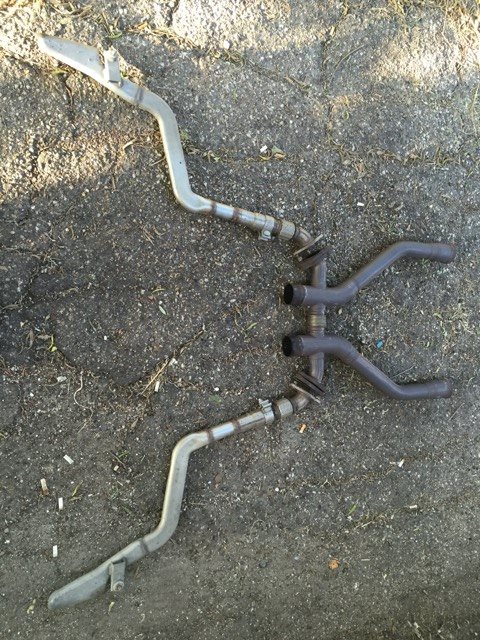
Additionally, it allows a lot more crackle and burble to exist the exhaust, especially when the factory limiters are removed. They essentially allow exhaust gas to take the path of least resistance out of the car.
You can also mimic this sort of exhaust experienced by taking your car to your trusted local muffler shop and explaining what you want to do. Any muffler shop worth their salt would be more than happy to try and fabricate something like this for you, as it is more than likely that they are enthusiasts themselves and would love a fun and interesting project to work on.
Somewhere between $300 and $500 in parts and labor will allow you to have nice exhaust cutouts with side exits. Aftermarket vendors also provide exhaust cutout kits, some with sophisticated electronic components that allow you to control the exhaust flow with switches, much like modern Mustangs and their active exhaust systems.
Personally, unless this is something you are really enthusiastic about, having a simple, manual system without the fancy switches is more than enough to get the effect that you’re looking for.
Backfiring and Shooting Flames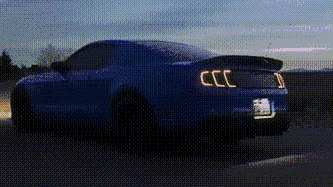
If you’re the sort of person who once the shoot flames out of their Mustang tailpipe, I’m with you. I think it’s cool, I really do.
A lot of old-school guys will turn their nose up at this sort of thing because it’s a fairly “import” thing to do. 10 seconds googling anything to do with the exhaust inflamed and you will see an army of Hondas and WRXs shooting flames out of their coffee can exhaust system (of which I was happy to watch at least an hours worth doing research for this post.)
Backfiring and shooting flames out of your exhaust system is more of the fuel mapping and improper throttle use that I mentioned above. Essentially, so much on that needed fuel is filling their exhaust system that is blowing out the back of the car.
Don’t even attempt this if you have catalytic converters. First of all, it won’t work. Your catalytic converters are meant to catch any unburned fuel from the engine and burn it before it exhausts the atmosphere. That’s literally their only job. Trying to ignite fuel while catalytic converters are installed it either going to fail or outright destroy your catalytic converters, throwing a check engine light.
The Nail in the Exhaust Trick and the Beer Can Trick
Some people say that adding a nail into the exhaust system will catch unburned fuel and provide a better popping sound, but I don’t recommend this in any way. Since the popping itself is caused by fuel, simply adding a nail into the pipe isn’t going to cause any more fuel to be in the system that was already there in the first place.
There are also a few kids on YouTube who are adding half a pop can as their exhaust tip. Evidently, they claim that it makes more sound or somehow amplifies the sound. Please don’t do this. That’s all I can say.
Drilling Holes in Your Exhaust System
The idea of drilling holes in your exhaust system comes from a long line of cheap, semi-dubious automotive engineering methods. This is the same school of thought as replacing your air filter box with a pod, or conical, filter to increase horsepower.
I’m certainly not turning up my nose at this sort of thing. I believe if you are truly into cars, you may have done something like this to your car at one time or another. I couldn’t have been the only high school kid to try something like this on my car on the cheap.
Does it work? Well… yeah. Kind of? Drilling holes in your muffler to circumvent the sound deadening material inside will naturally provide an increase in sound and texture. The same goes for drilling holes in your over axle pipes, after your catalytic converters.
In fact, this essentially the same thing that I just talked about above with the side exit pipes. Granted, side exit pipes allow the exhaust gases to exit the car at a predetermined place, but on a practical
If you’re looking to really enrich and the sound of your exhaust system, to get a lot more burbling, crackling, popping and other gorgeous sounds, but you’re extremely short on cash, maybe this is worth a look.
There are certainly some drawbacks with this strategy and I should forewarn you. Once you drill a hole, it will be extremely annoying to repair that hole if you change your mind. That hole may also widen by itself due to rusting.
Additionally, if you are allowing exhaust gases to escape under the car instead of from the rear of the car, there is a significant chance that it will begin to enter the cabin. This is why the exhaust exits out the back or the side of the car instead of directly below the driver. Exhaust gases are poisonous and very hazardous to your health.
Since the dawn of hot rodding, people have been doing this sort of thing to their cars. Many mods that we apply to our cars to otherwise increase performance or aesthetics slightly ruin the car from the manufacturer’s perspective. Of course, the goal of any mod is to improve the car, but there are always trade-offs. Better handling usually means harsher ride. Better quality parts usually
Related Questions
Why Does the Mustang GT Track Key Make Pops? The track key provides an ECU remap that provides different engine timing and increased fuel delivery for improved performance.
Do Ecoboost Mustangs backfire? Ecoboost Mustangs can pop, crackle, and backfire just like
Mustang GT Weight Compared and Explained
The weight of a Mustang GT varies by model, options, and year. Since managing weight is so important, here is a master list of all the Mustang model years and their gross weight. In an effort to measure similar models, only the estimated equivalent of the Mustang GT,...
read moreWhat Does an Anti-Roll Bar Do for an S197 Mustang?
Anti-roll bars are a common upgrade for S197s to improve affect handling. I did some research to figure out the difference between the models out there. What does an anti-roll bar do for an S197 Mustang? Anti-roll bars, or sway bars, prevent the body of the car from...
read moreHow to Run a Mustang Supercharger in Cold Weather
How can you protect your supercharged, 600+hp mustang in the winter? I did some research on what the warning in the manual for 25F actually means! Daily driving a Coyote Mustang has been one of the best experiences, especially after I lucked into a used Paxton...
read more
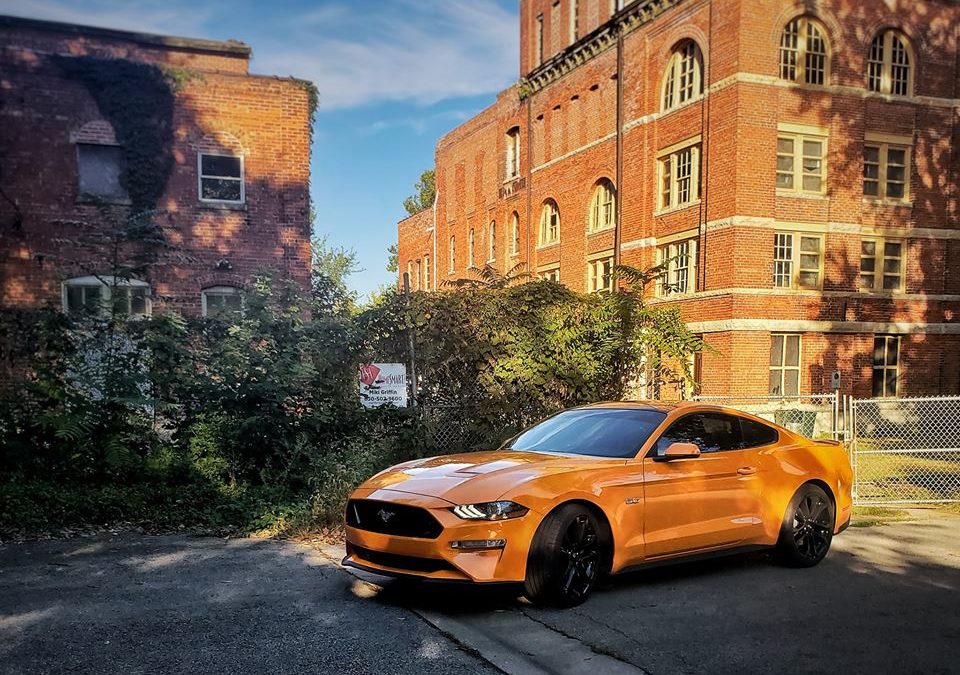
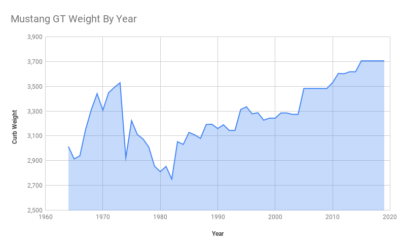
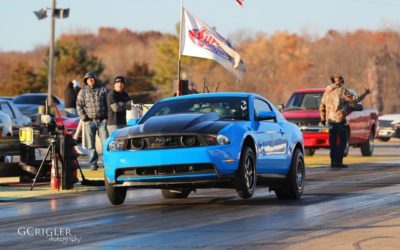

Recent Comments